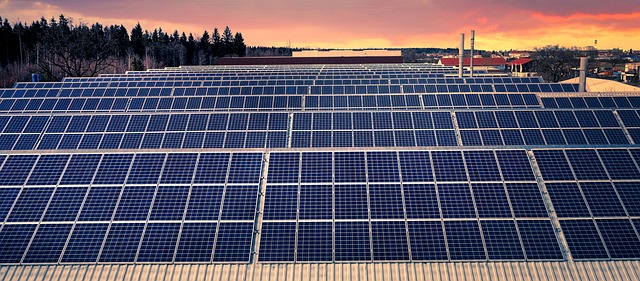Transform your business with industrial solar panels today

Industrial solar panels offer businesses a powerful way to cut energy costs and reduce reliance on unpredictable electricity markets. By harnessing scalable, efficient solar technology, companies can secure significant savings, improve sustainability credentials, and increase energy independence. Understanding installation, costs, and maintenance unlocks the full potential of solar power as a smart, long-term investment for commercial operations of all sizes.
Overview of Industrial Solar Panels and Their Significance
Industrial Solar Panels are specialized photovoltaic systems designed to meet the rigorous demands of large-scale or heavy-duty applications within industrial settings. Unlike residential solar systems, these panels are engineered for enhanced durability, greater capacity, and longer operational lifespans.
Topic to read : Maximize efficiency with top strategic sourcing solutions
Technically, industrial solar panels typically feature larger dimensions measuring around 1.8 meters by 1.1 meters or more which accommodate higher wattage modules capable of producing significant energy outputs. They are constructed from more robust materials to withstand harsh environments, including extreme weather conditions, high temperatures, and physical stresses that are common in manufacturing plants, warehouses, and logistics hubs.
A key differentiator from standard residential systems lies in their capacity often ranging from several hundred kilowatts to multiple megawatts and their resilience. These features ensure continuous performance over decades while reducing maintenance needs and operational risks. Their durability is supported through warranties that often last 25 years, with panels retaining over 85% of their efficiency well beyond this period.
Also to discover : Mobile tyre fitting Wiltshire: convenience at your doorstep
Deploying large-scale photovoltaic systems with Industrial Solar Panels plays an essential role in reducing energy costs for companies. For industries with high daytime energy demands, these systems generate substantial on-site energy during peak hours. This process not only lowers reliance on grid electricity but also contributes to cutting carbon footprints, aligning with broader sustainability goals.
Benefits of Industrial Solar Panels for Manufacturing and Commercial Facilities
Cost Savings and Financial Returns
Precision comes first: For manufacturing plants, industrial solar energy solutions present a sharp reduction in operational costs over the system’s lifetime. Most solar energy systems for factories in the UK incur installation costs between £16,000 and £60,000 for small-to-medium arrays, with a robust 4 to 5-year payback period and return on investment (ROI) figures rising between 16% and 45%. Larger commercial solar power installations, such as a 1,000 kWp large-scale photovoltaic system, yield even stronger unit cost advantages due to scale, sometimes cutting energy expenses by up to 75% compared with traditional power.
A clear cost-benefit analysis shows that while upfront investment remains high covering not just panels but inverters and mounting hardware the payback period is typically shortened by higher daytime electricity rates and direct use. The government reduces VAT on solar gear to 0% for new commercial investments, and although dedicated grants for solar panels on commercial buildings in the UK have disappeared, tax reliefs still play a role. Industrial rooftop solar solutions thus empower companies to replace pricey grid electricity, with annual savings that often reach five figures even for modestly sized factories. Factories installing these systems usually notice noticeable improvement in their long-term cost structure and energy independence.
Environmental Impact and Corporate Responsibility
With every kilowatt-hour produced on-site, industrial solar energy solutions sharply reduce factory carbon footprints by about 5 grams of CO₂ per kWh. Incorporating solar energy systems for factories directly aligns business operations with renewable energy targets for industrial businesses, enhancing public perception and meeting expectations for sustainable manufacturing with solar power. Many commercial solar power installations now contribute to high-visibility sustainability goals and corporate responsibility initiatives, both of which can be essential under tightening environmental regulations and as part of climate-focused procurement standards.
Large-scale photovoltaic systems add measurable value to company branding, signalling clear commitment to green practices. Customers, stakeholders, and local communities often respond positively to visible sustainability actions, providing reputational returns alongside emissions reductions. Environmental impact of solar in industrial operations is not just about compliance, it represents a strategic choice that can influence customer and supplier relationships over time.
Enhancing Energy Independence and Security
Relying on industrial solar energy solutions increases energy efficiency in industrial facilities and fortifies long-term control over energy costs. By generating power onsite, manufacturers and commercial operators shield themselves from conventional utility price hikes and unpredictable market surges. Solar power storage for business is becoming common, pairing main arrays with battery banks to provide resilience and uninterrupted supply even when grid connections falter.
Energy independence through solar for industry can be transformative in remote, high-demand, or energy-intense segments. Some businesses use hybrid or off-grid solar solutions for remote industrial sites, protecting essential production and refrigeration systems around the clock. Commercial solar power installations thus reduce production risk, help secure electric supply needed for continuous operations, and underpin robust contingency plans for factories and warehouses.
With these layered benefits, manufacturing plants equipped with up-to-date solar energy systems are not just saving money they are consistently improving productivity and future-proofing their operations. Solar energy cost reduction strategies in this context are more than a one-off effort; they foster resilience, efficiency, and visibility across a company’s operations.
